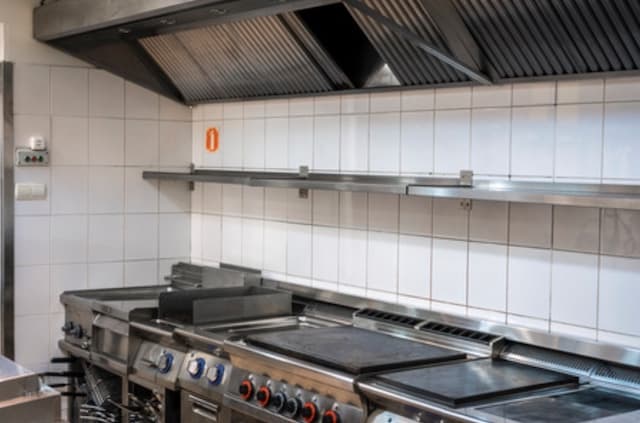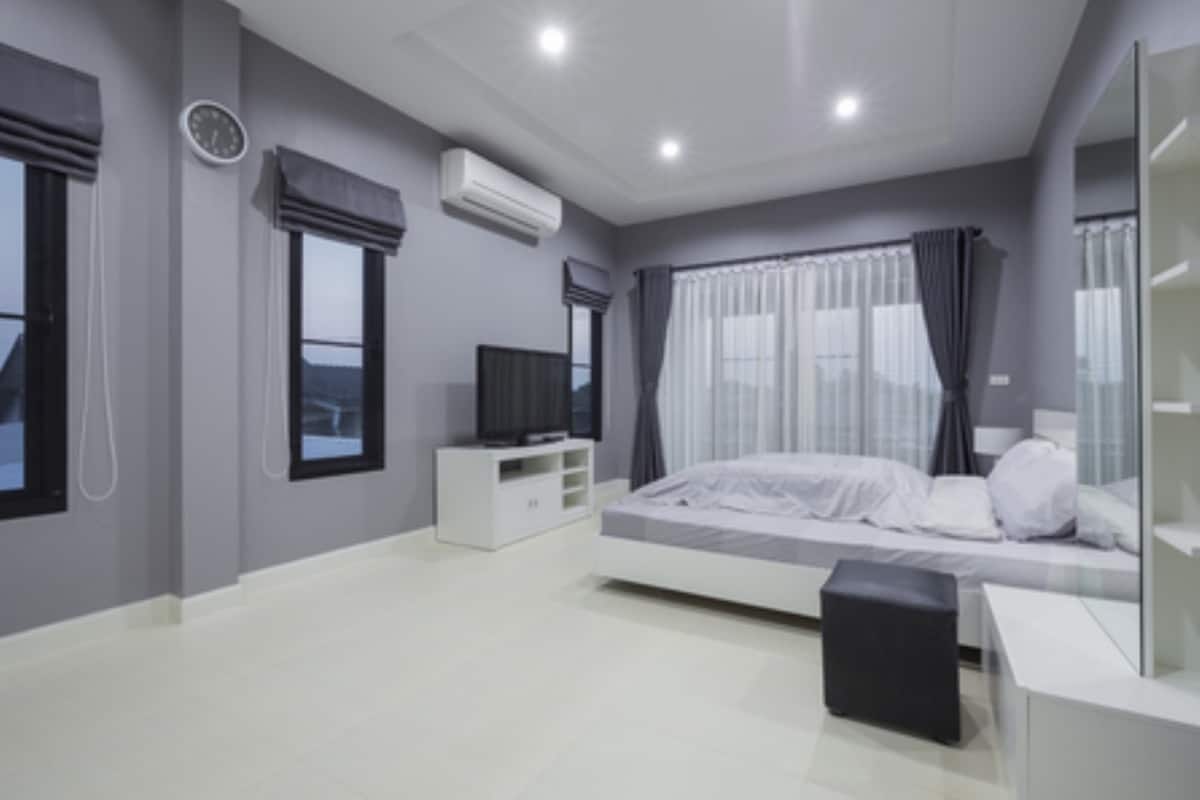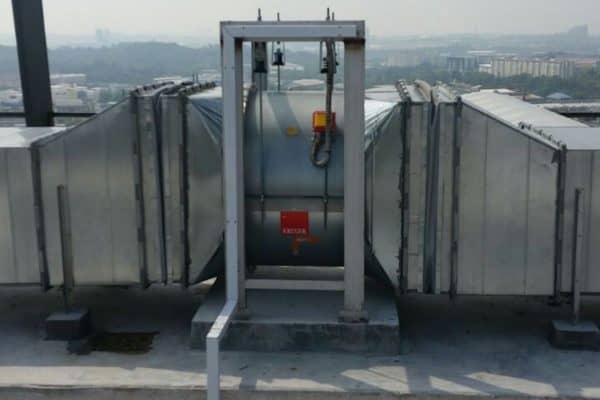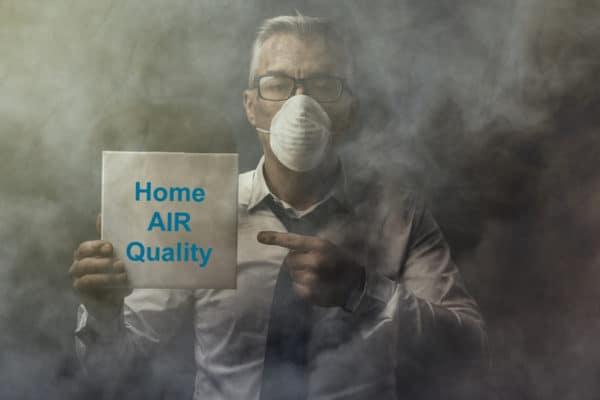How Oxygen Level is Maintained in AC Rooms?
Ever wonder how we can stay inside a large building for many hours and yet still breathing a sufficient level of oxygen? Needless to say, there is a way to maintain oxygen level in air-conditioned rooms.
Oxygen level can be maintained in air-conditioned rooms by introducing a fresh air system. Air conditioners can be attached with a fresh air duct to draw outside fresh air into the air conditioner. The outside air must be filtered, cooled and dehumidified by the air conditioner before it can be supplied to an air-conditioned room.
A fresh air system mostly can be found in commercial buildings rather than residential buildings. However, some people do connect a fresh air system to their air conditioner to stay refreshed.
What is a Fresh Air System?
A typical fresh air system consists of an axial fan, galvanized iron duct, polyethylene insulation, external weather louvre, air volume control damper and non-return damper. The fresh air system extended from the return air plenum box of an air conditioner to the external wall of a building.
A fresh air system starts with an external weather louvre with an insect screen placed at the external wall of a building followed by the polyethylene-insulated galvanized iron duct which connects the louvre all the way back to the return air plenum box of an air conditioner. In between the duct, an axial fan is placed where it is accessible for service. Right before the duct meets with the return air plenum box, it’s where a non-return damper and air volume control damper can be found.

Because the fresh air system required an opening at the exterior wall of a building, insects and birds can enter the building through the opening. Thus, the louvre used in a fresh air system must come with an insect screen which is a steel mesh, to prevent foreign objects and organisms from entering the building. Furthermore, the louvre must be weatherproof to prevent rainwater from entering the duct which can cause rust.
Besides, a fresh air system has a non-return damper to further block any foreign objects and organisms from entering the building through the fresh air duct. A non-return damper only allows the air to travel in one direction. Once the fresh air fan stops operating, air pressure drops to zero and the non-return damper closed by gravity.
Even though the outside air is not cold, insulation is still required for the fresh air duct. Since the fresh air duct is connected to an air conditioner, it is exposed to cold air. When the warm outside air travels inside a cold duct, water vapor in the air condense and form water droplets inside the duct which can cause rust.
An air volume control damper is required to control the amount of outside fresh air introduced into the air conditioning system. Typically, a fresh air system supplies fresh air at only about 10% of the supply air volume of the air conditioner. Introducing too much outside warm air will reduce the performance of the air conditioner.
A fresh air system with a short length of duct usually doesn’t require to have an axial fan because the air conditioner itself has sufficient fan static pressure to draw the outside air. Besides, a fresh air system also can be associated with an exhaust air system to improve air circulation.
Why a Fresh Air System is Connected to an Air Conditioner?
A fresh air system is usually connected to an air conditioner so that the outside air can be filtered, cooled and dehumidified. Besides that, if the outside air is directly introduced into a building without going through the air conditioner, condensation will occur at the supply air grille of the fresh air system.
Some rooms required a high air change rate such as a hospital operating theatre. The operating theatre is where doctors perform surgery for a patient. It required a high air change rate to circulate out dirty air caused by the surgery process. The air change rate is a measure of the air volume added to or removed from space in one hour, divided by the volume of the space.

Furthermore, the operating theatre required a very clean air environment. During the surgery, the patient’s inner body is exposed. Thus, the outside air must be filtered and conditioned by an air conditioner before it can be introduced into the operating theatre.
How Much Fresh Air Do We Need?
According to ASHRAE Standard 62.1-2007, residential units required a minimum of 0.06 cfm per square foot, assuming two persons per room. In another word, a 200 sqft room required a minimum of 12 cubic feet of fresh air per minute. The same goes for office space, shopping malls and supermarkets.
Residential units often don’t need a fresh air system to bring in outside air because the windows and doors are bringing a sufficient amount of outside air into the room. However, many offices, especially in a high-rise building, required a fresh air system because the windows are not openable. Furthermore, many high-rise buildings have rooms located at the center of the building which makes it very hard for the outside air to circulate these rooms.
If you wish to know more about how to ventilate a room with air conditioner, I put together some more information and a tutorial on the installation of a fresh air duct to a ceiling cassette air conditioner. I hope it is helpful to you. Feel free to check it out.
Other Types of Fresh Air System
A fresh system is very useful in many applications. Some required only the fresh air but not cooling and some merely used it to balance the air pressure.
Fresh Air Unit
A fresh air unit is an air conditioner that draws only the outside fresh air and supplies it into a building. Normally, an air conditioner circulates air within a room. A fresh air unit is designed to take in outside air, filter it, cool it and supply it either to another air conditioner or directly into a building.
A fresh air unit that supplies air to another air conditioner is often called a pre-cool air conditioner. As the name suggests, a pre-cool air conditioner supplies air at a lower temperature to another air conditioner. Thus, the air conditioner that receives the pre-cooled air doesn’t need to work as hard as when it has to cool the warm outside air directly.
There are a few benefits of using a pre-cool air conditioner. One of them is all other air conditioners can be physically smaller because they don’t need that much cooling capacity now thanks to the pre-cooled air. Thus, buildings owners can have more space for commercial purposes.
Some fresh air units do supply air directly into a building. Certain buildings, especially buildings that hold a lot of people at one time, need a lot of fresh air but don’t necessarily need the level of cooling that a standard air conditioner provides. Hence, a fresh air unit is a perfect solution.
Kitchen Exhaust System
A fresh air system can be found in a commercial kitchen exhaust system. In a commercial kitchen, a great amount of heat is generated from the cooking fire as well as the cooking appliances. Thus, an exhaust system is needed. However, if the air pressure inside the kitchen becomes negative, the exhaust system can’t work.

Therefore, the system introduces fresh air at a slightly lesser volume than the exhaust air into the kitchen. In the kitchen, air pressure must always be negative to prevent smells from escaping out of the kitchen.
Smoke Spill System
A smoke spill system is used to discharge smoke in a confined space such as the basement during a fire. Smoke can’t be discharged effectively when space is in a negative air pressure state. Hence, a greater amount of fresh air must be supplied into the space to create a positive air pressure as well as “pushing” the smoke towards the exhaust fan to discharge the smoke quickly.
Pressurization System
In high-rise buildings, the staircase is the only way to evacuate in case of an emergency such as a fire. During a fire, smoke can travel to the staircase which greatly reduces the survival rate of people. Thus, a pressurization system supplies a great amount of fresh air into the staircase, ensuring the staircase is always in a positive air pressure state to prevent smoke from entering the staircase.
If you have anything to add (or ask) about this topic, leave a comment down below!









